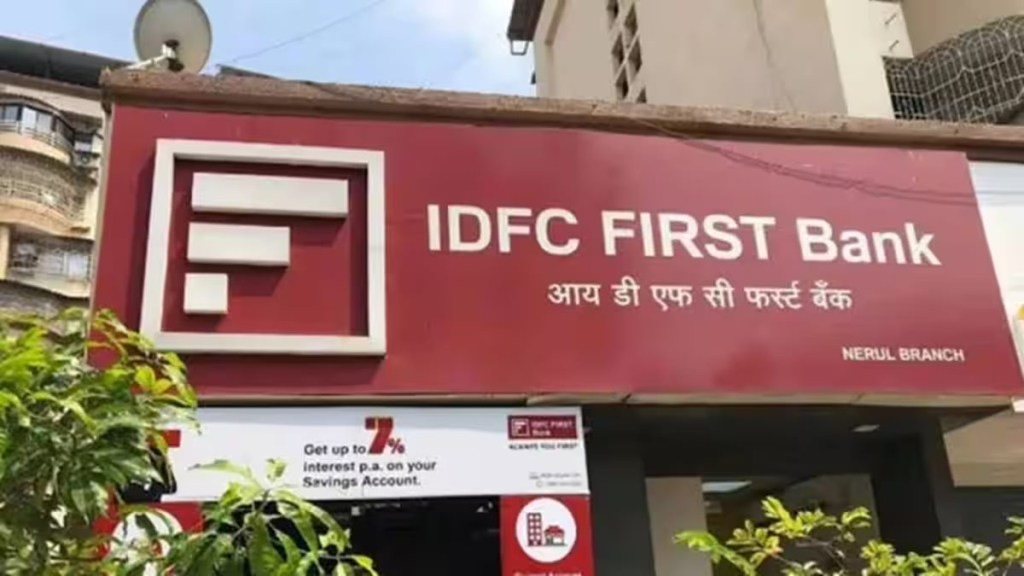IDFC First Bank is focused on growing its retail deposits with an aim to build a granular franchise, says its managing director and chief executive officer V Vaidyanathan. He tells Ajay Ramanathan that the bank’s treasury income and net interest margin will be stable from hereon. Excerpts:
Your net interest margins have fallen on a sequential basis in the June quarter. How do you asses this?
The existing stock of savings accounts has moved to fixed deposits, so it does impact the margin. But these small movements do not bother us. Customers should do what is good for them, it is fine with us.
Do you expect margins to be under pressure for a prolonged period?
I feel that the interest rates have peaked now. Therefore, incremental cost of funds should stabilise at these rates. But there will be some catch up of the fixed deposits with the new rates. Generally speaking, things should be stable from hereon.
We do not have a target on margins. They are whatever they are. We are more focused about building a granular franchise from a retail deposits point of view. Our retail deposits have risen 51% year-on-year. When you grow retail deposits, whether current account savings account or fixed deposits, it lends granularity and gives more stability to the franchise. Rest, a bit increase or decrease in cost of funds by a few basis points here or there, and some small impact on margins does not really matter. We focus on the big picture.
Your corporate segment bad loans had ballooned in 2020, even as other banks have been able to manage their asset quality. What was the reason for this?
It was an industry-level phenomenon. Those days, meaning a few years ago, GNPA of the corporate sector had risen to 16%. Earlier, we were doing project financing. In project financing, someone comes to you and says that I want to build this road or set up this power plant. Here, the project risk gets transferred to the bank. If the power plant does not come up or the company is not able to sign the power purchase agreement with the state government, it will become the bank’s problem. So, project financing is project risks. Our bank does not want to take any project completion risks. We only want to finance such businesses which already have completed the set up, already has clients, already has cash flow from clients, is already profitable and already throwing cash. Not somebody who will set up something because we cannot take those risks.
Is it the same for small enterprises also?
Yes, of course. It is the same logic. Even if it a small or medium business, it should be up and running, and we should be able to see the cash flow before we finance it. We can’t take execution risks. We are not a private equity firm. Similarly, retail borrowers already have demonstrated monthly income in the bank statements when we lend to them.
Some banks have said that there is a pricing mismatch between loan rates demanded by corporates vis a vis banks and this has led to a slowdown in the corporate loan growth. Are you seeing a similar issue?
Not much in the lines of business that we are in. In the business that we are in, we focus more on being able to meet the customer segment need. There is a lot of demand in our segments. Research says that there is $250 billion MSME credit gap in the country and growing. There is a lot of demand from small enterprises and medium enterprises for working capital financing and we are largely doing working capital financing. We do large corporates also. Also, I think around 40% of our book is externally benchmarked, of which about 24% is repo linked which is not very much. So, if repo rates come down after a year or so, whenever it comes down, we will not get affected much.
Income from treasury operations has risen sharply for many banks. What is the outlook on treasury income for IDFC First Bank?
You should not depend on treasury income at all, nobody can predict it. We are very particular in disclosing core profit excluding treasury gains. Our core operating profit which is operating profit without considering treasury trading income grew by 45% when the loan book grew by 25%. So, it shows that our incremental profitability is strong. We plan to keep it growing stably from here on.
Now that the IDFC name has been transferred to the bank, do you plan on retaining it?
The brand and bank is doing very well, and we are very happy with the name.

